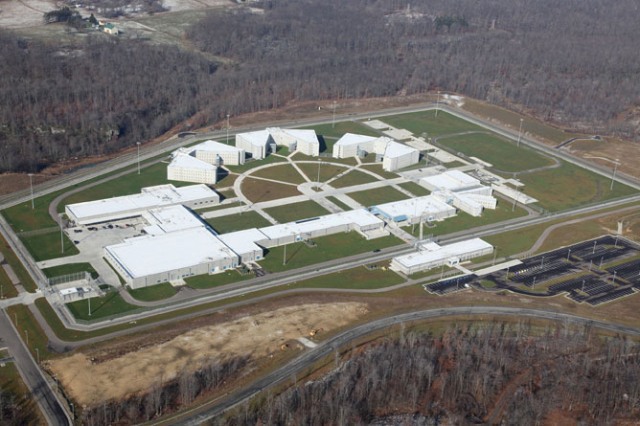Jul 3 2013
The new medium-security Federal Correctional Institution (FCI) at the United States Penitentiary facility in Hazelton, West Virginia earned Leadership in Energy and Environmental Design (LEED®) Gold certification with the U.S. Green Building Council.
 Federal Correctional Institution in Hazelton, West Virginia
Federal Correctional Institution in Hazelton, West Virginia
This 540,000-square-foot, multi-building complex is designed to support over 1,100 inmates while minimizing environmental impact and conserving resources. Featuring both general and special housing, the complex includes administration, visitation, health services, food service, maintenance, laundry, commissary, UNICOR factory, vocational training, and educational services. This project is the first LEED Gold achievement for the Federal Bureau of Prisons (FBOP).
Incorporating appropriate sustainable and high performance design strategies for a large-scale facility that is operational 365 days a year required the expertise and efforts of a highly-integrated team. The FBOP partnered with a design-build team that included Hensel Phelps Construction Company, Moseley Architects, Alpha Associates, TLC Engineering for Architecture, and Timmons Group to achieve their vision for a secure, functional, and sustainable facility. This marks the second LEED certified project for the FBOP, Moseley Architects, and Hensel Phelps team. In 2006, FCI Butner Medium II earned LEED certification making it the first LEED certified prison in the world.
The sustainable design effort kicked off in November 2009 with a LEED design workshop led by Moseley Architects’ Sustainability Coordinators. The event brought the entire project team together to discuss a strategy that would comply with Federal requirements, such as the Guiding Principles for Federal Leadership in High Performance Buildings, and achieve a minimum goal of LEED Certified. Together the team explored numerous options for innovative technologies, evaluating which strategies were economically feasible in the short-term, but would provide the most long-term benefit. Due to the water and energy intensive nature of correctional facilities, a strong emphasis was placed on maximizing efficiency.
Consequently the facility features an innovative laundry water recycling system that is estimated to reduce laundry water usage by 50 percent, which will save over two million gallons of water per year and also reduce the energy needed to pre-heat laundry water. Water is further conserved with low-flow lavatories, showers, and water closets throughout the facility that is estimated to save at least another 350,000 gallons of water per year. The complex also features a highly-efficient HVAC system with energy recovery technology, upgraded thermal performance of the precast wall system and window glazing, improved domestic hot water efficiency, and energy-efficient interior and exterior lighting. In accordance with the Energy Policy Act, energy use is modeled to be 30 percent less than a baseline (minimally code-compliant) facility and the energy metering is configured to facilitate long-term measurement and verification.
The team also sought to use as many regionally-manufactured building materials as possible. Structural precast materials were manufactured by Tindall Corporation in Petersburg, Virginia. Rock excavated from the site was crushed and re-used as backfill material, eliminating the need to bring in stone that was remotely quarried. Construction waste was sorted on-site and sent to be recycled, diverting a total of 1,682 tons of debris away from landfills.
Daylight filters into the complex through the strategic placement of windows, clerestories, and tubular skylights, which provide occupant comfort and minimize the need for electrical lighting, while maintaining security. To protect the health and well-being of employees, visitors, and inmates, indoor air quality was carefully protected during construction, and was improved by a building flush-out prior to occupancy. Adhesives, sealants, paint, carpet, and composite wood products contain low chemical concentrations (volatile organic compounds and formaldehyde).
FCI at Hazelton marks the 50th LEED certified project for Moseley Architects, who has been partnering with clients to meet sustainability and energy efficiency goals for both new and renovated facilities since 2000.